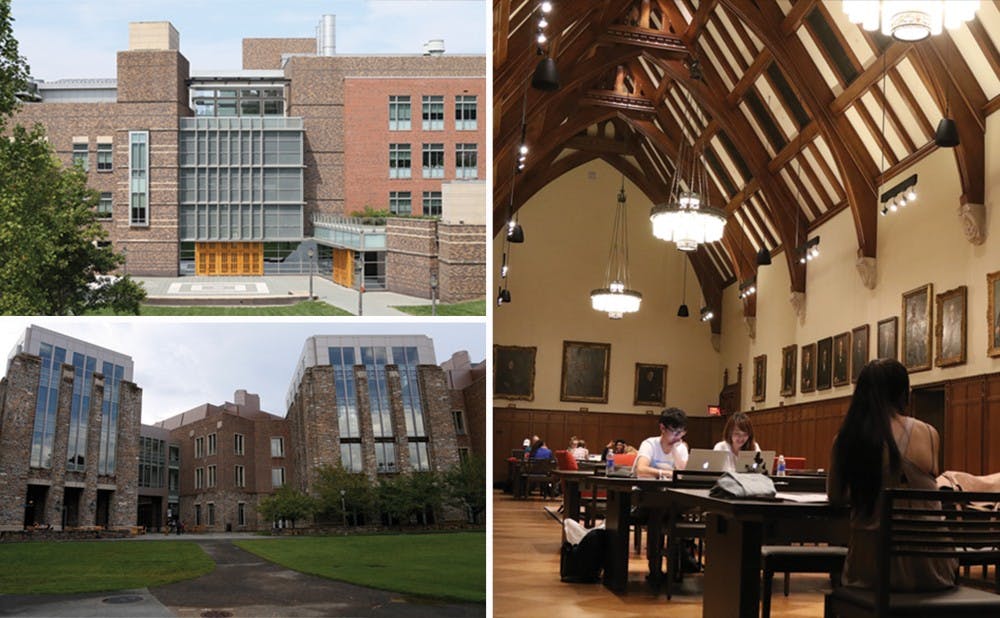Winter may be three months away, but students are already feeling chilly.
Recently, students have complained about excessive air conditioning in several campus buildings, particularly Perkins Library, CIEMAS and Science Drive facilities. Many students claim that the cold temperatures have affected their ability to work efficiently. The Facilities Management department is evaluating the air conditioning systems to determine whether adjustments are needed.
“It’s cold to the point where you have to bring your own jacket,” senior Cathy Li said about Perkins. “I thought the purpose of air conditioning was to keep people comfortable, but it’s not really comfortable at all.”
Steve Palumbo, director of facility operations, explained that the heating, ventilating and air conditioning systems are programmed to operate as efficiently as possible but noted that his department is looking at Perkins to see if changes need to be made.
“Temperatures in buildings can feel different to different folks. It is important to understand that our buildings systems are not like a home,” he wrote in an email. “We are looking at Perkins to confirm that the systems are operating efficiently and that we are maintaining the temperature and humidity levels that the Library folks desire.”
For large spaces such as Perkins, temperature is not the only thing regulated by air conditioning systems, Palumbo explained. They also reduce humidity, which requires the air to be chilled and then reheated before being piped into the building.
“We don’t want to over-reheat a space as this wastes energy, but we need to make sure the spaces are comfortable,” he wrote.
Many students said that the temperature inside campus buildings is anything but comfortable.
Two weeks ago, sophomore Adriana Santomero complained on the Fix My Campus Facebook page about the temperature inside Perkins after seeing multiple people there with blankets and jackets. Santomero said she has yet to notice any changes, adding that she had planned to spend her day studying in the library but was too cold and left.
The low temperatures could also pose health issues, noted sophomore Harvey Shi.
“The main issue with having the buildings be so cold at the beginning of the year with all the hot weather is going in and out [of the buildings]. If you weren’t careful, you could get sick pretty easily,” Shi said.
Shi—who lives in the Smart Home, a live-in research laboratory operated by the Pratt School of Engineering—said residents of the Smart Home are interested in analyzing the University’s energy efficiency.
Sophomore Lauren Perry-Carrera noted that living on Central Campus poses additional challenges for her because returning to her apartment for warmer clothing is inconvenient.
“I have to bring a change of clothes,” Perry-Carrera said. “Most of the classrooms in general, I tend to bring a jacket.”
She said she has taken to working in the Allen Building, where the temperature is more suitable for her.
Palumbo explained that controlling the temperature of a building depends on the age of its control system. Buildings with control systems older than 25 years allow the user to set the temperature as desired.
However, buildings with newer control systems can set their own temperature within a restricted range, or the department controlling the space can ask for it to be set at a specific point. This allows the facilities management department to override any variations within the building in order to save energy. Typically, temperatures are set to 76 degrees in the summer and 70 in the winter.
According to Palumbo, the University and the Medical Center use more than 100 million kilowatt-hours of electricity to chill water used for air conditioning systems each year, which costs approximately $20 million. This energy cools over 13 million gross square feet of floor area, the equivalent of 15,000 average-sized homes.
Palumbo noted that Duke’s system is one of the most energy efficient in the country and has helped reduce the overall energy consumption on campus.
Still, students insist that Perkins and other buildings are excessively cold.
“The library isn’t a giant fridge to store books,” Li said. “I tend to make a lot of mistakes when I’m doing my work when I’m really cold. The temperature inside should at least make people comfortable.”
Get The Chronicle straight to your inbox
Signup for our weekly newsletter. Cancel at any time.
Adam Beyer is a senior public policy major and is The Chronicle's Digital Strategy Team director.

